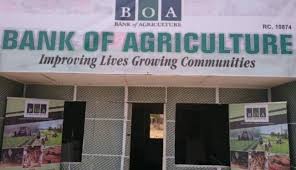In the previous article, it was noted that both agricultural lenders and farmers face many costs due to the risks and uncertainties of agriculture. This article will expand further on the problems specifically encountered by government financial institutions in the course of fulfilling their roles in agricultural lending.
Situations Faced by Government Lending Agencies in Agricultural Financing
Criticism is often directed at government credit institutions serving agriculture in developing countries. However, it is important to consider the formidable challenges under which they are required to function.
While some problems arise from the basic policies, organization, and operations of these institutions, other impediments are inherent in the economic and social conditions in which they must operate.
In the case of small farmer-borrowers especially, their resource base is severely limited, and they possess little formal education or understanding of the wise use of credit.
Roads and transport facilities required for bringing in necessary supplies and services, and for taking produce to market, are often mediocre or non-existent. Weather, price, and biological risks are high, and government policies may provide little income incentive.
Thus, when credit institutions attempt to reach a significant number of farmers, they find themselves dealing with a large number of individuals scattered over a wide geographic area.
Communication is hampered, timely actions are difficult, and effective supervision is challenging. In short, most of the economic, social, and political difficulties that have hindered agricultural development also affect private and government credit institutions attempting to serve small-scale farmers.
Additional problems include high administrative costs, high default rates, complicated administrative procedures, poor communication with other agricultural services, inadequate supply of loanable funds, insufficient personnel, illiteracy among small-scale farmers, lack of loan security, low interest rates, and high credit delivery costs. These points are discussed in subsequent sections.
Read Also: Maggot Feeding: Can You Feed Fishes with Maggots?
High Administrative Costs in Agricultural Credit

To be self-supporting, a credit agency must charge an interest rate on its loans high enough to recover three types of costs: the cost incurred to obtain the funds, the loss of capital through loan defaults, and the administrative costs of operating the credit agency.
For instance, if a credit agency pays six percent for the money it borrows for on-lending, loses six percent of its capital annually through bad debts, and has administrative costs equal to eight percent of its loans, it would need to charge twenty percent interest to break even.
Government credit agencies in developing countries often find that loan losses and administrative costs get out of control. It becomes impossible to charge borrowers interest rates high enough to cover these costs, making the institution dependent on government support to continue operations.
In practice, administrative costs are not always calculated consistently. Sometimes only part of the system’s operating costs is considered, although it is customary to include all personnel, transport, and office costs involved in the process of extending and collecting loans from farmers.
However, there is debate on whether all the services a credit agency’s staff perform should be counted as credit administration costs. For example, some argue that the development of farm plans and technical supervision of loan use should be considered farmer education.
Once the total administrative costs for a year are determined, they may be expressed as a percentage by dividing the total sum by the value of new loans made during the year and/or by the total loan portfolio.
From an internal management perspective, it is advisable to take a comprehensive view of credit administration costs and, where possible, allocate the total cost among the major functions the credit institution performs. This type of cost analysis can reveal areas where administrative overhead is excessive relative to the benefits, allowing for adjustments.
High Default Rate in Agricultural Lending
The World Bank considers reducing the high rate of delinquency and default as the most critical issue facing government credit programs attempting to operate on a self-sustaining basis. If a significant portion of an institution’s loans are not repaid, the lender’s capital is quickly depleted, and the institution must cease functioning as a loan agency unless the government provides additional funds. Some credit programs have managed to operate this way for a period, but such programs cannot be regarded as a long-term solution to farmers’ financial needs.
Although non-repayment of loans is a serious issue, reliable data on the actual magnitude of the problem are often not available. One challenge is the variation in the definition of terms used by lending institutions in reporting data. For example, how long should a loan remain delinquent before it is classified as non-collectible and written off? How much arrears are concealed by the refinancing of unpaid loans, which may then be counted as having been repaid?
A common measure of delinquency is the percentage of an institution’s loan portfolio that is overdue on a given date. A high ratio would certainly signal potential serious trouble, but this ratio may not reveal enough about the nature of the problem.
For instance, short-term loans that may be delinquent for only a month or two and are soon repaid are included on the same basis as loans where no payments on principal or interest have been received for several years and which are likely uncollectible.
In Nigeria, repayment performance was poor for rice-maize group loans made in 1972. Loans to 30 rice groups involving 390 farmers had been 75 percent repaid by June 30, 1973, but the repayment rate varied widely, from 32.9 percent for rice loans in one administrative area to 90.7 percent in another.
Loans to 44 maize groups were 57.2 percent repaid by the same date. In contrast, 95 percent of loans to 32 cocoa groups were repaid by June 30, 1973. The profitability of cocoa, along with the fact that repayment could be collected at the point of sale for cocoa, were likely significant factors in the superior repayment performance.
Loan repayment is also affected by the widespread belief that government loans are effectively grants that do not need to be repaid. Unfortunately, some governments have done little to counter this misconception.
As noted by Ugoh, many people view the government as a distant, impersonal institution, and do not see themselves as part of it. They expect to receive their share of the “national cake” that the government is supposed to bake, store, and distribute.
Other cultural values and beliefs of farmers may also influence repayment behavior. As Gillette and Uphoff point out, attitudes toward work, the division of labor, time and thrift, credit and indebtedness, and government in general are all critical factors affecting a farmer’s use of credit and willingness to repay loans.
Read Also: The Best Between Local Catfish Feed and Foreign Feed
Complicated Administrative Procedures in Agricultural Credit

The use of numerous forms can discourage borrowers and add to the lender’s administrative costs. The high degree of centralization in the system slows down the lending process, often leading to complaints that the credit arrives too late to be useful for its intended purpose.
Addressing this issue, Osuntogun noted that one of the major reasons for the failure of many credit institutions in Nigeria is the complicated, cumbersome, and time-consuming procedures, which result in delays in loan approval and loans not being made available when needed.
Patel, based on first-hand experience, expressed concern over the tedious lending procedures borrowers face in terms of time, effort, and money. For example, before a farmer can obtain a loan, multiple trips to the divisional or circle office are required.
These trips might involve purchasing application forms, submitting the forms, bringing guarantors to sign in the presence of an officer, obtaining photographs, inquiring multiple times if the cheque is ready, collecting the cheque, and finally going to the bank to cash it.
For small farmers located 10 to 15 kilometers from the divisional office, these trips are burdensome and expensive. On small loans, these transaction costs may even exceed the interest charges, making the total cost of credit high for the borrower, despite comparatively low interest rates.
In addition to interest payments, Adams and Nehman identified three other types of costs borrowers may incur when obtaining, negotiating, and repaying loans. These include additional transaction charges collected by the lender beyond interest payments, loan transaction costs paid to third parties, and the time and other costs incurred by the borrower as a result of the loan process.
When these transaction costs are considered, the high interest rates charged by informal lenders on small loans may be more competitive with institutional credit than is generally recognized.
Poor Coordination with Other Agricultural Services
Agricultural credit alone is insufficient to benefit small farmers in developing countries. Without coordinated support, credit may be misused, leaving farmers burdened with debt and no additional income. For credit to be effective, certain services must accompany it:
1. Agricultural Extension: Farmers need training on how to use credit productively.
2. Farm Supply Systems: Fertilizers, seeds, and pesticides should be available to farmers when needed, in proper quantities, and of good quality.
3. Marketing Organization: Farmers require stable, profitable outlets to sell their produce.
Even when these services are available, they often lack coordination with credit programs, limiting their effectiveness. Farmers may receive training but lack supplies, or vice versa, or face challenges selling their products at profitable prices. Coordination among government units, such as extension services, credit, and cooperatives, often fails at the village level, where it is most needed.
Inadequate Supply of Loanable Funds
Public credit institutions often face issues of insufficient or unstable funding for their loan programs. Delays or reductions in loan funds due to national budget issues or external sources can erode farmers’ trust.
Unexpectedly high defaults and administrative costs further strain institutions’ budgets, requiring additional capital from government or external sources to continue lending. Inflation exacerbates this issue by reducing the purchasing power of the funds available for agricultural production.
Interest rate caps imposed by governments also hinder institutions from being self-sustaining, forcing them to seek new funds to maintain operations.
Personnel Problems
Government-run credit institutions share staffing challenges common to public organizations in developing countries. While positions may be filled, finding individuals with appropriate training and dedication can be difficult. The technical competence of field workers and their ability to earn farmers’ trust is crucial to a program’s success.
Rapid program expansion often exceeds staff capacity, which can undermine the confidence of both farmers and staff. Additionally, government personnel policies may discourage retention and reward, causing key staff to be transferred before gaining sufficient experience in their roles. Short courses and training programs have been developed to mitigate these issues.
Illiteracy of Small-Scale Farmers
High illiteracy rates among small-scale farmers hinder their ability to access formal credit institutions. In southern Nigeria, farmer illiteracy rates range from 60% to 80%, with even higher rates in the north.
Illiterate farmers struggle to complete loan applications and may not fully understand loan terms, which can affect repayment schedules and farm cash flow. This lack of literacy poses a significant barrier to formal agricultural funding.
Lack of Security for Loans
Smallholder farmers often lack the necessary security for loans. Land is typically required as collateral, but many smallholders either do not own the land they farm or lack clear titles, making it impossible to use as collateral.
The 1978 Land Use Act, which places land ownership under federal, state, or local governments, further limits farmers’ ability to secure loans. Many farmers also lack sufficient savings to demonstrate creditworthiness. Banks rank the lack of security as the top constraint in extending loans to small farmers.
Low Interest Rate Charges on Agricultural Loans

Government lending institutions charge extremely low-interest rates on agricultural loans compared to other sectors. Between 1964 and 1982, formal lenders charged a fixed 6% interest rate on agricultural loans, which has been problematic for recovery efforts. Low rates encourage the misuse of funds for consumption rather than investment in agricultural production, compounding the difficulty of recovering loans.
High Credit Delivery Cost
The high cost of delivering credit to small-scale farmers limits government institutions’ ability to reach deserving farmers. The large number and widespread distribution of small-scale farmers raise the administrative and operational costs of identifying and serving them.
Limited executive capacity within credit institutions, combined with scarce funds, further exacerbates this issue, making it costly for institutions to deliver credit effectively.
Do you have any questions, suggestions, or contributions? If so, please feel free to use the comment box below to share your thoughts. We also encourage you to kindly share this information with others who might benefit from it. Since we can’t reach everyone at once, we truly appreciate your help in spreading the word. Thank you so much for your support and for sharing!
Read Also: Measurement and Definition of the term water yield

